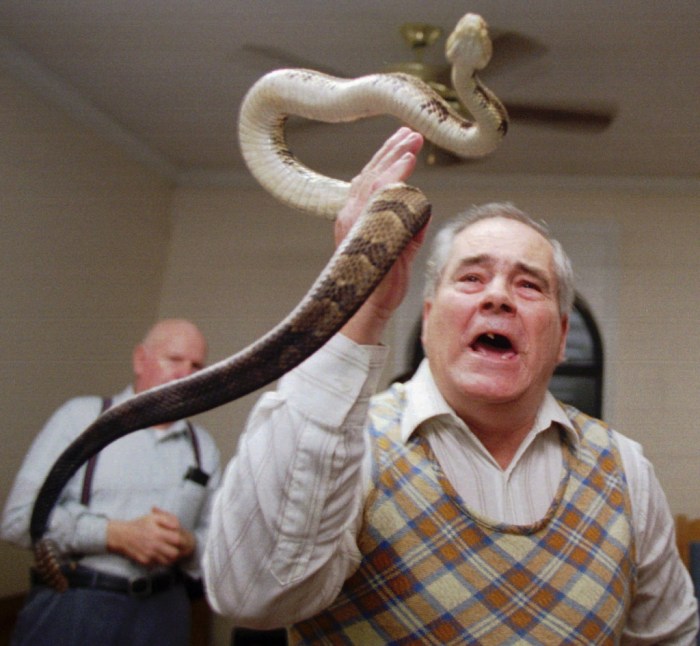
How to handle his snake yumi sin and fit kitty – In this guide, we’ll dive into the fascinating world of snake handling, covering everything you need to know about caring for your serpentine companion. From proper handling techniques to dietary requirements and health considerations, we’ve got you covered. So, let’s get started on your journey as a responsible snake owner!
Snake Handling Techniques

Handling snakes requires proper technique and safety precautions. Understanding the snake’s behavior and anatomy is crucial for a successful and safe interaction.
It’s a delicate dance, handling my slithery Yumi Sin and my fluffy Fit Kitty. But when it comes to insurance agents, there’s a whole other level of juggling to master. To boost their productivity, check out this guide on how to increase insurance agent productivity . With these tips, they’ll be balancing policies and paperwork like pros.
Now, back to my furry and scaly companions. It’s a constant balancing act, but hey, it’s all part of the fun!
Proper Grip and Body Positioning:
- Support the snake’s body:Use both hands to support the snake’s weight, with one hand close to the head and the other near the tail.
- Avoid sudden movements:Move slowly and gently to avoid startling the snake.
- Maintain a secure grip:Hold the snake firmly but not too tightly, using a gentle but firm grip.
Safety Precautions:
- Wash hands before and after handling:Snakes can carry bacteria that can be harmful to humans.
- Avoid handling snakes after feeding:Snakes may become aggressive or defensive if they are recently fed.
- Never handle a snake alone:Always have someone present in case of an emergency.
Potential Hazards:
- Bites:Snakes can bite if they feel threatened or provoked.
- Venom:Venomous snakes can inject venom into a bite, which can be life-threatening.
- Constriction:Some snakes may constrict their prey, which can cause injury or death.
Different Handling Methods for Various Snake Species:
- Constrictors:Support the snake’s body evenly and avoid putting pressure on its belly.
- Vipers:Handle vipers with extreme caution, using tongs or a snake hook.
- Elapids:Elapids are highly venomous and should only be handled by experienced professionals.
Feeding and Nutrition

Maintaining a healthy diet is essential for the well-being of snakes. Understanding their specific dietary requirements, including food types, frequency, and portion sizes, is crucial for ensuring proper nutrition.
Snakes are carnivorous and their diet primarily consists of live or frozen prey. The type of prey varies depending on the snake species, with some specializing in rodents, birds, or fish. The frequency of feeding also varies, with smaller snakes requiring more frequent meals than larger ones.
Portion sizes should be appropriate to the size of the snake, typically around 10-15% of their body weight.
So, if you’re wondering how to handle his snake yumi sin and fit kitty, then you’re in luck! I’ve got the perfect guide for you. This guide will teach you everything you need to know about handling snakes and cats, from the basics of safety to the more advanced techniques of training.
So, whether you’re a beginner or an experienced snake handler, this guide has something for you. Click here to get started.
Preparing and Offering Food, How to handle his snake yumi sin and fit kitty
Properly preparing and offering food to snakes is essential for their health and safety. Live prey should be of appropriate size and should be handled with care to avoid injury to the snake. Frozen prey should be thawed thoroughly before offering it to the snake.
It is important to monitor the snake while it is eating to ensure it does not regurgitate the food.
Enclosure Setup and Maintenance
A suitable enclosure is crucial for a snake’s well-being, providing a safe and comfortable habitat that meets its specific needs. The enclosure should be designed considering the snake’s size, species-specific temperature and humidity requirements, and opportunities for enrichment and hiding.
Enclosure Size and Design
The enclosure should be large enough for the snake to move around comfortably, thermoregulate, and engage in natural behaviors like climbing and burrowing. As a general rule, the enclosure should be at least twice the length of the snake and one and a half times its width.
To handle his snake Yumi Sin and fit kitty, he uses a gentle touch and keeps them in a secure environment. Additionally, he has been learning about how to increase insurance agent productivity. By following the strategies outlined here , he has been able to improve his sales and provide better service to his clients.
As a result, he has become a more successful insurance agent and is able to provide a better life for his pets.
For arboreal snakes, vertical space is also important, with the enclosure being at least as tall as the snake is long.
Temperature and Humidity
Snakes are ectothermic, meaning they rely on external heat sources to regulate their body temperature. The enclosure should provide a temperature gradient, with a warm end and a cool end, so that the snake can thermoregulate by moving between the two.
The warm end should be around 85-90°F (29-32°C), while the cool end should be around 75-80°F (24-27°C). Humidity is also important for snakes, especially for shedding. The enclosure should maintain a humidity level of around 50-60%.
Equipment and Supplies
The following equipment and supplies are necessary for a snake’s enclosure:
- Heat source:A heat lamp or under-tank heater is necessary to provide a warm end in the enclosure.
- Thermometer and hygrometer:These are essential for monitoring the temperature and humidity in the enclosure.
- Substrate:The substrate is the material that covers the bottom of the enclosure. It can be made of various materials, such as aspen shavings, coconut husk, or paper towels.
- Hiding places:Snakes need places to hide in order to feel secure. These can be provided by commercial hides, cardboard boxes, or natural materials like rocks or logs.
- Water bowl:A shallow water bowl should be provided for the snake to drink from.
Cleaning and Maintenance
Regular cleaning and maintenance are essential for the snake’s well-being. The enclosure should be spot-cleaned daily to remove feces and uneaten food. The substrate should be replaced every 1-2 weeks, and the entire enclosure should be deep-cleaned every 4-6 weeks.
Deep cleaning involves removing everything from the enclosure and washing it down with a reptile-safe disinfectant.
Health Care and Common Ailments

Snakes, like any other pet, can experience health issues. Recognizing the signs and symptoms of common ailments is crucial for their well-being. Preventive measures and timely treatment can significantly improve their health outcomes.
Recognizing Common Health Issues
- Respiratory Infections:Symptoms include wheezing, coughing, and nasal discharge.
- Skin Infections:Look for redness, swelling, or scales that are raised or discolored.
- Digestive Problems:Signs include regurgitation, vomiting, or diarrhea.
- Metabolic Bone Disease:This condition, caused by calcium deficiency, leads to weakened bones and deformities.
- Parasites:Internal or external parasites can cause weight loss, lethargy, and digestive issues.
Preventive Measures and Treatments
- Regular Check-ups:Schedule routine veterinary exams to detect and address health issues early.
- Proper Hygiene:Maintain a clean enclosure and disinfect surfaces regularly to prevent infections.
- Appropriate Diet:Feed your snake a balanced diet that meets its nutritional needs and prevents digestive problems.
- Supplements:Provide calcium and vitamin supplements as recommended by your veterinarian to prevent metabolic bone disease.
- Parasite Control:Regularly deworm your snake and treat for external parasites as needed.
Seeking Professional Veterinary Care
If you notice any unusual signs or symptoms in your snake, it’s crucial to seek professional veterinary care promptly. Early diagnosis and treatment can significantly improve the chances of a successful recovery.
Behavioral Considerations

Understanding the natural behaviors and instincts of snakes is crucial for proper handling and care. Snakes possess unique body language and behaviors that convey their intentions and emotional states.
Looking for tips on how to handle his snake yumi sin and fit kitty? How to handle his snake yumi sin and fit kitty can help you with that. There you can find the best tips on how to handle his snake yumi sin and fit kitty, and many more.
Once you know how to handle his snake yumi sin and fit kitty, you can rest assured that you will succeed in all that you do.
Interpreting Snake Body Language and Behavior
- Tongue Flicking:Snakes use their tongues to gather chemical information from their surroundings. Frequent tongue flicking indicates curiosity or exploration, while rapid flicking can signal stress or agitation.
- Coiling:Coiling is a defensive posture, where snakes gather their bodies into tight loops to protect their vulnerable underbelly. This behavior is often seen when they feel threatened or cornered.
- Striking:Striking is a predatory response where snakes rapidly extend their heads and fangs towards a perceived threat or prey. It’s important to note that snakes typically only strike when they feel threatened or provoked.
- Hissing:Hissing is a defensive vocalization used to deter potential predators. It’s characterized by a sharp, sibilant sound that can vary in intensity and duration.
- Regurgitation:Regurgitation is a defense mechanism where snakes expel recently consumed food to escape a perceived threat. It’s often accompanied by muscle contractions and can indicate stress or discomfort.
Socialization and Enrichment for Snakes
While snakes are generally solitary creatures, they can benefit from socialization and enrichment activities that stimulate their natural behaviors and promote well-being.
- Handling:Regular, gentle handling helps snakes become accustomed to human presence and reduces stress levels. It’s important to handle snakes with respect and avoid sudden movements or loud noises.
- Enclosure Enrichment:Providing a variety of hiding places, climbing structures, and basking spots within the snake’s enclosure encourages natural behaviors and promotes mental stimulation.
- Feeding Enrichment:Offering live prey or puzzle feeders can engage snakes’ predatory instincts and provide mental enrichment. It’s crucial to ensure prey is appropriately sized and presented in a safe manner.
Summary
Now that you’re armed with this comprehensive knowledge, you’re well-equipped to provide a safe and nurturing environment for your snake. Remember, patience, observation, and a genuine love for these amazing creatures are key to a fulfilling companionship. Happy snake handling!
Question Bank: How To Handle His Snake Yumi Sin And Fit Kitty
What’s the best way to hold a snake?
Always support the snake’s body with one hand near its head and the other near its tail. Avoid squeezing or applying pressure.
How often should I feed my snake?
Feeding frequency depends on the snake’s species and age. Generally, young snakes need to eat more often than adults.
What are the signs of a healthy snake?
A healthy snake will have clear eyes, smooth scales, and an active appetite. It should also shed its skin regularly.





